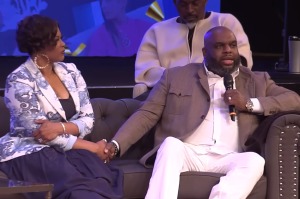Are Hispanics becoming more Republican? Pollster says it's unclear if rightward shift is 'durable'

While exit polls from the 2022 midterm elections indicate a double-digit swing in Latino voters from Democrat to Republican since 2020, many pollsters and election experts have looked into the possibility that Hispanics, a traditionally strong voting bloc for Democrats, could be shifting in their political support.
Exit polling from last Tuesday shows a slight improvement in Republicans' performance with Latinos, with 39% of Hispanics saying they voted for Republican candidates, an increase of 7 percentage points from the 2020 presidential election. While 65% of Latino voters voted for Democrats in 2020, only 60% said the same in 2022, representing a 12-point swing in Latinos' net support for Democrats dropping from 33% in 2020 to 21% in 2022.
In some local and state races, the shift is even more dramatic.
One example of this is Florida. According to exit polls reported by ABC News, Republican incumbent Gov. Ron DeSantis garnered 57% of the Hispanic vote last week after losing the Hispanic vote by 10 percentage points in 2018.
Republican Monica De La Cruz made history by becoming the first Republican elected to represent Texas' 15th Congressional District. She defeated Democrat Michelle Vallejo by 8.5 points in a once-blue majority-Latino district that has swung to the right in recent years. Her victory came months after Republican Rep. Mayra Flores became the first Mexican-born woman elected to Congress after winning a June special election in another historically blue South Texas district.
Exit polling on the demographic has been contradictory at times. Exit polls from Virginia's 2021 gubernatorial race were conflicted on the status of the Latino vote, with Associated Press' VoteCast indicating that Republican Glen Youngkin won Hispanics by a dozen percentage points, while Edison Research reported Democrat Terry McAuliffe won the voting bloc by 34 percentage points.
To examine the question of whether Latinos are shifting from Democrat to Republican, The Christian Post spoke with polling experts to gauge their insight on the matter.
Mark Hugo Lopez, director of Race & Ethnicity Research at Pew Research Center, told CP that there "has been a shift underway in Latino voters' support for Republican candidates for a few years now."
"From 2016 to 2020, the share of Latino voters who voted for Donald Trump grew from 28% to 38%, according to a Pew Research Center verified voter study," he said.
Lopez cited "preliminary results based on exit polls," which suggest Republican candidates won about as much Latino support in 2022 as they did in 2020.
Lopez says there are "many factors that may be contributing to these changes," including the context of certain elections and outreach.
"First is the candidates themselves and the national and local context of recent elections. Who is running and how things are going in the nation can affect voters' choices," he said.
"Second, how campaigns reach out to voters can make a difference too. For example, what issues are campaigns focusing on as they do voter outreach?"
Nevertheless, Lopez says it's "important to note" that there have been "similar shifts in Latino voters' support for Republican candidates in the past," including during the 1980s and among Latino voters between 2004 and 2012.
"What remains unknown is whether this shift will be durable," Lopez added.
Robert Cahaly, the senior strategist and pollster with The Trafalgar Group, believes a shift is ongoing in the Latino community. He attributed it partly to "the Democrats' departure from traditional faith-based values."
Cahaly contends that if Democrats want to combat this trend, they would have to make "a fundamental change" to their proposed policies and "reject the very secular notions" that he believed underpinned them.
"They would have to just completely reject that element of the party that is moving them away from faith-based values to secularism," he said.
Cahaly suggests Republicans should "keep treating Hispanic voters like regular people" and "reject any notion that they're monolithic."
"Treat them like they are individuals whose votes you must earn every two years," continued Cahaly. "Show them that respect."
Questions about the state of the Latino vote come as the results of the 2022 midterm elections continue to trickle in, showing that the expected "red wave" only resulted in modest gains for Republicans, including taking control of the House of Representatives.
Poll results have varied leading up to the midterm elections. A survey conducted in April by Marist University in conjunction with NPR and PBS NewsHour found 52% of Latinos said they support the Republican candidate for Congress compared to 39% who would vote for the Democrat.
Samuel Rodriguez, president of the National Hispanic Christian Leadership Conference, told CP earlier this year that many Latinos are "abandoning the Democratic Party or leftist ideologies" because of their opposition to abortion. He pointed to South Texas as an example of a region where Latinos are voting more Republican than before.
Congressional districts based in South Texas swung heavily toward the Republican Party in 2020. Democrat Hillary Clinton won the 15th Congressional District in 2016 by a margin of nearly 17 points, but the district only supported Biden by less than 2 percentage points in the 2020 election. The shift culminated this year in the Republican De La Cruz's victory in a once-blue district.
"The districts that used to be blue are now red," Rodriguez said of South Texas. "These are districts with 87%, 89%, 90% Latino populations, and now they're becoming all red."





























